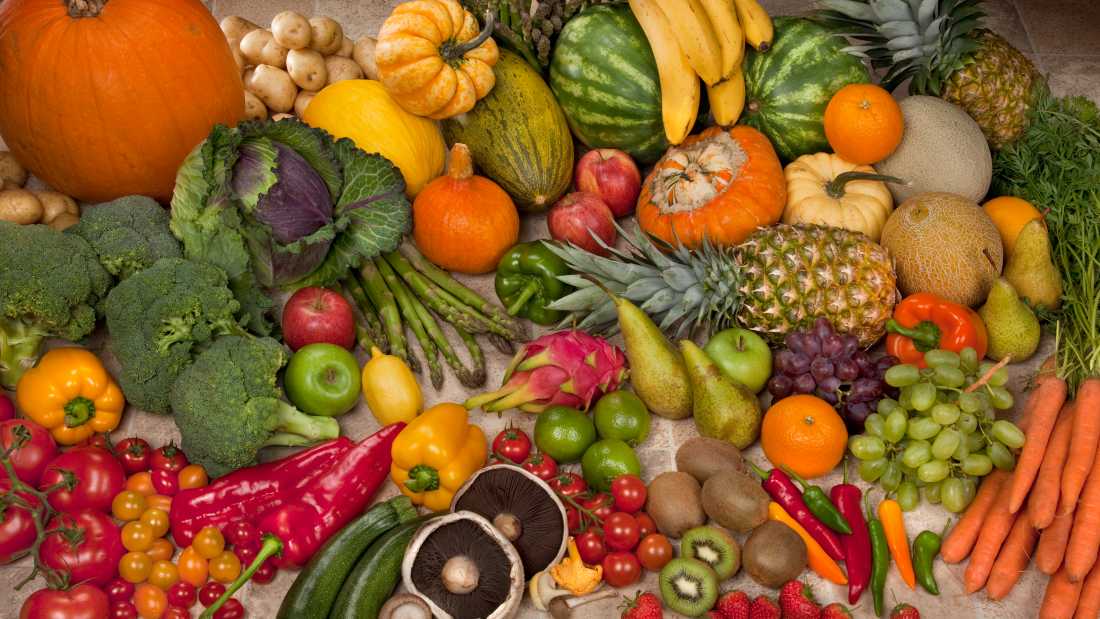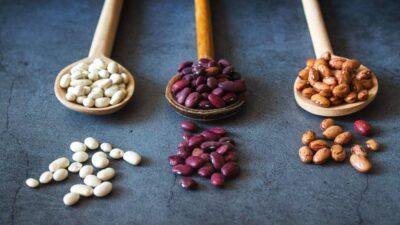10 ways to eat 30 plants a week

There’s a reason most governments recommend at least five portions of fruits and vegetables a day. Studies show that that amount reduces mortality and those who eat more plants have lower rates of heart disease, cancer and type 2 diabetes. But it’s not just about quantity. It is now becoming clear that eating a variety of plants has additional benefits, such as diversifying the gut microbiome and giving us a more resilient gut. So, researchers recommend that, instead of just aiming for five portions of fruit and veg a day, we should aim to consume 30 different plants across the week. If that sounds daunting, here are 10 ways to make it easy to achieve.
1. Rotate your plate
It’s easy to fall into the routine of eating the same vegetables day in, day out. But by rotating the veg you eat, you can add variety without having to reinvent the wheel. For example, have broccoli one night, cauliflower the next, kale another and Brussels sprouts the following (or all at once!). Instead of garden peas with every meal, try broad beans, green beans, edamame and butter beans. And rather than eating white potato every day, try other varieties, sweet potato, butternut squash and pumpkin. The basic make-up of your plate stays the same, but by swapping one aspect, you can create a lot more variety.
2. Become BFF with beans
With so many varieties of beans, which are often easily interchangeable in a recipe, they are a great way to diversify your plate. You can conclude several types in one meal, such as kidney beans, cannellini beans and black beans in a three-bean chilli or simply add a different side of beans to each meal. If you find beans a bit boring, try them in a Buddha bowl with a nice creamy cashew ‘cheese’ sauce.
3. A sprinkling of seeds
A sprinkling of seeds goes a long way! There are few meals, sweet or savoury, that couldn’t benefit from the addition of some seeds. Pumpkin seeds are a great choice because of their high omega-3 content, but you can use sunflower seeds, sesame seeds, poppy seeds and hemp seeds. Even better, buy a mixed bag and sprinkle them on everything!
4. Explore the whole range of wholegrains
Wholegrains form the base for many dishes and fortunately, there are loads to choose from, so experiment with grains you’ve never tried before. You could make a simple Buddha or poke bowl with brown rice, quinoa, couscous, bulgur or buckwheat. If the closest you get to wholegrains is the bread you use for sandwiches, then try rye/pumpernickel bread, oat bread and sourdough, which is healthier than normal supermarket bread and may help regulate blood sugar levels.
5. Never the same nut
Nuts truly are nature’s gift! There are so many and each has unique properties so it’s best to eat a variety. Almonds are great for calcium, magnesium, vitamins E and B2; cashews are excellent for iron, zinc, magnesium and vitamin K; Brazil nuts are an outstanding source of selenium, and walnuts are a superb source of omega-3 fats. That’s not to mention peanuts, pecans, pistachios and hazelnuts! A bag of unsalted mixed nuts is a convenient way to diversify: they can be eaten on their own or added to muesli, yoghurt, smoothie bowls and salads. Nowadays you can buy nut butter made from almost any nut so why not enjoy your nuts on a slice of wholemeal toast with some sliced banana and a sprinkling of cinnamon?!
6. Spruce up your soya yoghurt
The humble soya yoghurt already counts as one plant food, but it’s easy – and delicious – to spruce it up so that it is bursting with plant goodness. You can add a dollop of nutter butter, some sliced banana, chopped dates, berries, oats, nuts and seeds to turn a plain yoghurt into a beautiful breakfast. If yoghurt isn’t your cup of tea, the same principle can be applied to chia pudding and overnight oats.
7. Smoothie bowl-ed over
Home-made smoothies are so versatile and can go a long way to meeting your 30-plant target. Unlike juice, a home-made smoothie should contain the whole fruit so you’re still getting all the fibre and good stuff that you don’t get in juice. A recent study has even shown that smoothies don’t necessarily raise blood sugar levels more than eating the whole fruit, and they can be a healthful part of a balanced diet. One smoothie could contain: dairy-free milk, banana, berries, avocado, kale, spinach, nut butter, oats, flaxseed, cacao nibs, cinnamon and even some tofu. That’s already over 10 plants! Even better, make a plant-packed smoothie bowl, topped with nuts, seeds and a healthy granola. The only limit is your imagination!
8. Super snacks
When we’re feeling a little bored or peckish it’s all too easy to reach for a biscuit or bag of crisps, but this is a great opportunity to get some more plant points. Carrot sticks and sliced pepper with hummus and a few olives is a great option. Having some trail mix or mixed nuts handy is a much healthier way to satisfy cravings while diversifying your gut microbiome.
9. Go old school
There are so many mouth-watering and realistic meat alternatives around these days that the thought of returning to bean burgers and falafels might seem off-putting to some vegans. But embracing vegan staples like black bean burgers, falafel wraps and marinated or smoked tofu instead of eating processed mock meats all the time is a way to increase your plant count. But whatever your protein of choice, go to town on your accompanying salad, using mixed leaves, different varieties of tomatoes and peppers, herbs, spices and seeds.
10. Spice up your life
Herbs and spices count towards your 30 plants – and it’s an easy way to rack up the points. You could probably get half a dozen different ones in a curry or chilli, and by the time you add all the beans and veg, you’re well on your way to the target.
Eating 30 fruits and vegetables a week needn’t be more work and, as you can hopefully see, you don’t need to be a masterchef to accomplish it. Like all things, once you get into the habit of doing it, it becomes, well, a habit. And if you’re eating a wholefood plant-based diet, you’re probably on your way! These are just 10 ways you can get more plants in your life, but there are many more – and you’re probably doing some of them without even knowing it, such as enjoying your morning cup of coffee or a square of dark chocolate after dinner.







